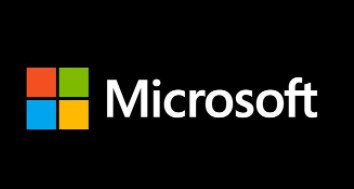 Microsoft is one of the world’s most prominent copyright holders with a vast experience in fighting piracy.
Microsoft is one of the world’s most prominent copyright holders with a vast experience in fighting piracy.
The company is part of the Software Alliance (BSA), for example, which is known to track copyright infringements both off- and online.
The BSA is also known for its piracy bounties, where it promises whistleblowers cash rewards in return for fruitful tips. This is a controversial strategy which Microsoft’s own research team hopes to improve upon.
Argus
A few days ago Microsoft’s research department published an article titled: Argus: A Fully Transparent Incentive System for Anti-Piracy Campaigns, which lays out the details of its plan.
The paper, which also received input from researchers at Alibaba and Carnegie Mellon University, suggests that an open and transparent blockchain is part of the solution. This openness is currently missing from BSA-style reporting mechanisms.
“Industrial alliances and companies are running anti-piracy incentive campaigns, but their effectiveness is publicly questioned due to the lack of transparency. We believe that full transparency of a campaign is necessary to truly incentivize people,” the paper reads.
Piracy Bounty Hunting
The article is full of technical details. We don’t strive to provide a full summary but, simply put, Argus is a transparent system built on the Ethereum blockchain that allows people to anonymously report piracy in exchange for a bounty.

Pirated content is traced back to the source through a unique watermark that corresponds with a secret code. When a pirated copy is reported, the status of the source (licensee) is changed to “accused.” The system provides an appeal option, but if that fails, the accused status changes to “guilty.”
Argus is an open system but there are various safeguards to prevent abuse. Reporting the same pirated work multiple times under different aliases is useless, for example, as that will only reduce the reward.
Low Blockchain Costs
The system relies on several checks to ensure that the system is open, while avoiding false accusations at the same time. And according to the researchers, the costs of utilizing the blockchain are relatively low.
“We effectively optimize several cryptographic operations so that the cost for a piracy reporting is reduced to an equivalent cost of sending about 14 ETH-transfer transactions to run on the public Ethereum network, which would otherwise correspond to thousands of transactions.
“With the security and practicality of Argus, we hope real-world anti-piracy campaigns will be truly effective by shifting to a fully transparent incentive mechanism,” the researchers add.
Real-World Use?
Whether Microsoft has any plans to test the system in the wild is unknown. It theoretically works with various media types including images, audio and software.
That said, it’s unclear how effective it will be. The researchers “assume” that the watermarking technology deployed is tamper-free, which isn’t always the case today.
All in all, it’s intriguing to see blockchain technology used to improve the rather old-fashioned piracy reporting campaigns. This idea isn’t completely new, however, as the South African company Custos came up with a similar idea years ago.
Microsoft’s research notes that Argus is superior to Custos’ solution as it can assess the severity of piracy and the strength of accusations. At the same time, they believe Argus is better than BSA’s campaigns because the reward payments are transparent.
The paper and the Argus system will be presented at the upcoming 40th International Symposium on Reliable Distributed Systems, which will be held virtually at the end of September.
From: TF, for the latest news on copyright battles, piracy and more.
0 Commentaires